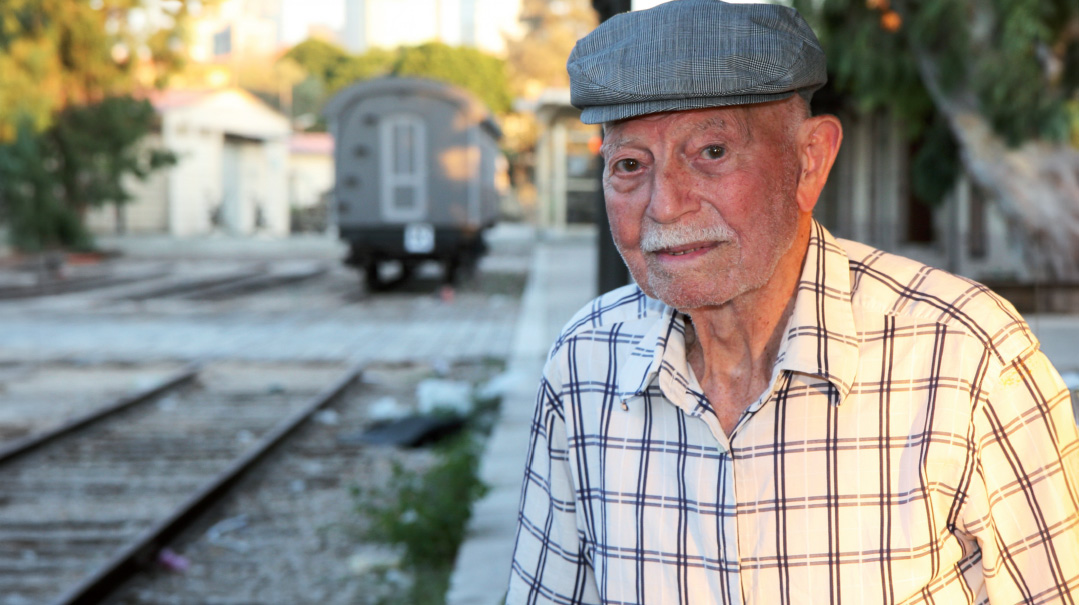Last Child of Gaza
| November 28, 2023Yosef Agiv, the oldest Jew to be born in Gaza City’s ancient Jewish community, remembered being expelled with his family before World War I

Photos: Moshe Stern, Machon Katif, AP Images
He passed away 10 years ago at 100, yet he never gave up the vision of Jews moving back to this seaside settlement that has become the Arab capital of hate and aggression
“Every time PLO chief Yasser Arafat proposed that all Jews return to their native lands, I would tell myself that I would return to Gaza City where I was born, and Arafat would return to Egypt where he was born,” my friend Reb Yosef Agiv a”h used to say.
Reb Yosef, who passed away a decade ago at the age of 100, was the oldest surviving Jew born in the Jewish community of Gaza. He was a fount of memories, clear as a whistle until his last days, and was happy to teach anyone who would listen about the better days of the community before the Jews were expelled, first by the Turks and then by the British.
Although the city was totally liquidated on the backdrop of the 1929 riots in which Arabs attacked a number of Jewish settlements in Eretz Yisrael, Yosef was only two when he and his parents were banished from Gaza during World War I, when the Turks expelled all civilian residents from the city, transforming it into a battle zone for their war against the British.
Although he was just a toddler when the family was expelled from Gaza to Jaffa, Yosef — a grandson of Reb Eliyahu Arvutz, one of the famed wheat merchants of the Jewish community of Gaza — returned as a teen, and his memories of that ancient Jewish city were always clear, focused, and eager to be shared.
“Today Gaza has many streets and is a bustling city,” he told me shortly before his death, “but in the past, there was only one small street along the length of the sea. My parents lived near the city’s ancient synagogue, but there was also another large synagogue in Gaza, with a huge, well-cultivated yard, and this was the core of Jewish life in the city.”
Jewish settlement in Gaza started many centuries before. In fact, the area was conquered and settled over 2,000 years ago by Yonasan and Shimon, brothers of Yehudah ben Mattisyahu (Maccabi). There was a Jewish community in Gaza in the period of the Mishnah as well, and on one of the pillars of the present-day great mosque in Gaza is the inscription, “Chanania bar-Yaacov” in Greek and in Hebrew, and above is engraved a menorah, with a shofar on one side and an esrog on the other. There is also the famed mosaic floor of a Talmudic-era shul.
Many centuries later, Reb Yosef’s family, like most of Gaza’s Jewish families, were merchants who sold Gazan products abroad. His father and grandfather crossed borders and traversed continents, with the active Gaza port as their base.
How did a modern urban Jewish settlement begin in Gaza, when so much of Eretz Yisrael lay in waste until the aliyot of the 19th century? According to historian and journalist Chagai Huberman, the credit goes to a fellow named Ze’ev Klonimus Wissotzky — the famed tea manufacturer (whose name still appears on the tea bags of the company he founded) — who visited Eretz Yisrael in 1885. While touring the country and its struggling settlements, he promised to help its Jewish residents to the best of his ability.
Oops! We could not locate your form.







